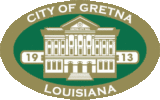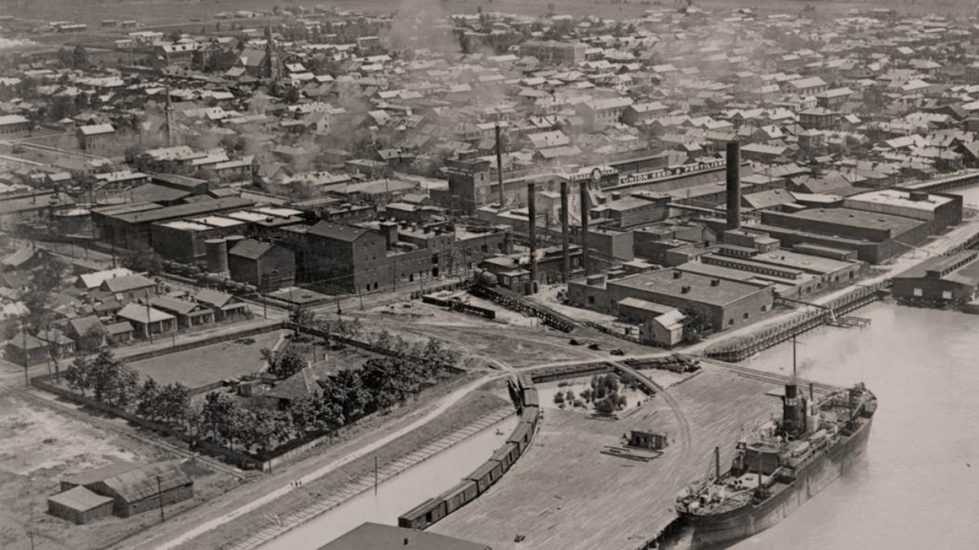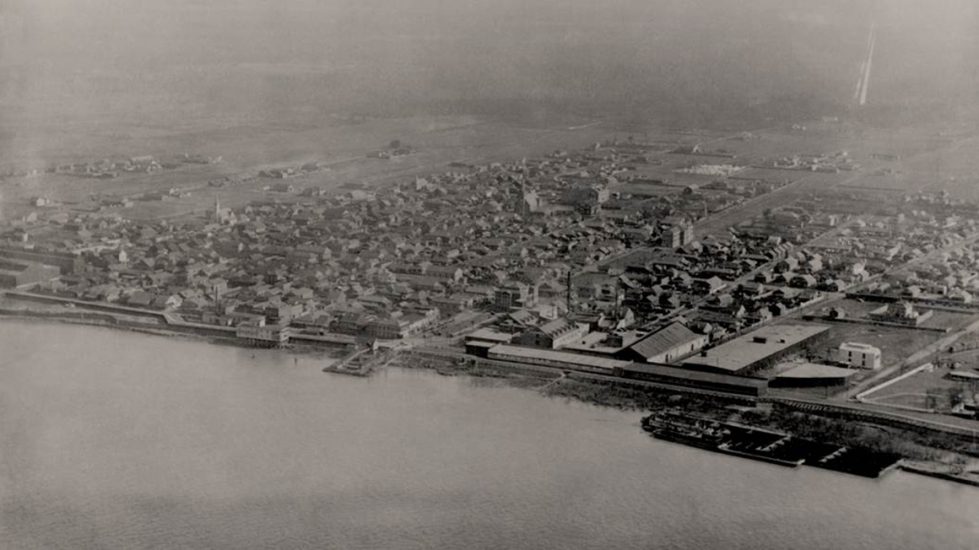History of Gretna
Old Gretna (Mechanikham-Gretna Historic District)
Mechanikham was established in 1836 when wealthy landowner, Nicholas Noel Destrehan, hired surveyor Benjamin Buisson to divide his long and narrow swath of land on the river into lots. Buisson’s original symmetrical plan created a two-block-wide settlement with Huey P. Long Avenue (originally Copernicus Avenue) at the center and one street on either side (now Newton and Weyer Streets). Mechanikham quickly became home to many German immigrants who played a vital role in the City’s development and whose descendants became some of Gretna’s most prominent citizens.
The community of Gretna was established two years later when the St. Mary’s Market Steam Ferry Company purchased and divided a four-block-wide stretch immediately downriver from Mechanikham. Gretna’s streets were regularly laid in the same manner as Mechanikham, and its cross streets were numbered as they are today. An essential feature of the new development was its dedicated ferry landing located directly across the river from St. Mary’s Market in New Orleans.
McDonoghville
Named for its philanthropic and reclusive founder, John McDonogh, McDonoghville was established in 1815, which makes it Gretna’s earliest subdivided development. The McDonoghville Historic District is characterized by modest residences set back on sizeable lots and a lack of commercial corridors, which gives it a sleepy, pastoral atmosphere that is rooted in its origins as a residential farming community. The 1845 guidebook Norman’s New Orleans remarked in its brief mention of the place (“MacDonough”) that “the country, the beautiful country is all around—and the noise and confusion of the city no longer annoy you.” Although McDonoghville has been part of the City of Gretna since 1913, this sense of being removed from city life continues to distinguish it from its more urbanized neighbors.
Before McDonogh purchased the former plantation of Francois Bernoudy in 1813 and founded his namesake settlement, the western bank of the Mississippi River was a long row of working plantations backed by woodlands. McDonogh’s property was the site of Monplaisir, a 1750 plantation house built for Jean de Pradel that sat near the present-day McDonoghville-Algiers border. The house and its auxiliary buildings were taken by the river in the late 19th century. McDonogh, who had been residing in New Orleans, moved into the house and divided the remaining land into regular lots and narrow, thirty-arpent strips for farming, which he sold or leased to laborers and some free people of color. While living there, he owned several slaves, whom he educated and encouraged to work for their freedom. Many of those freed men and women settled in a portion of McDonoghville called Freetown.
McDonoghville National Register Nomination
The City of Gretna was recently awarded funds from the National Park Service and Lt. Governor’s Office to assist with placing McDonoghville on the National Register of Historic Places.
McDonoghville is considered to be the oldest neighborhood in Jefferson Parish and among the oldest in the Greater New Orleans Region. Even so, there is little comprehensive research regarding the community’s origins and evolution. The National Register nomination process is a first step toward better understanding the neighborhood’s history.
The City is currently working place McDonoghville on the National Register of Historic Places. More information about that process can be found here.
Modern Gretna
The opening of the Mississippi River Bridge in 1958 and the construction of the Westbank Expressway changed the urban fabric of Gretna. The Expressway cut through mainly residential parts of the City, eliminating the 1400 block of Gretna and disconnecting the southern neighborhood of Jonestown from the rest of the City. The new thoroughfare quickly transformed into a commercial corridor and residential development along the street disappeared. Quick and convenient access to New Orleans provided by the new bridge triggered population growth and the expansion of the community with more suburban-style development in the southern portions of the City – with the expansion and development of the Bellevue, New Garden Park and Timberlane subdivisions.
Additional information can be found through the Tourism Office at 504.363.1580 or tourism@grentala.com.











